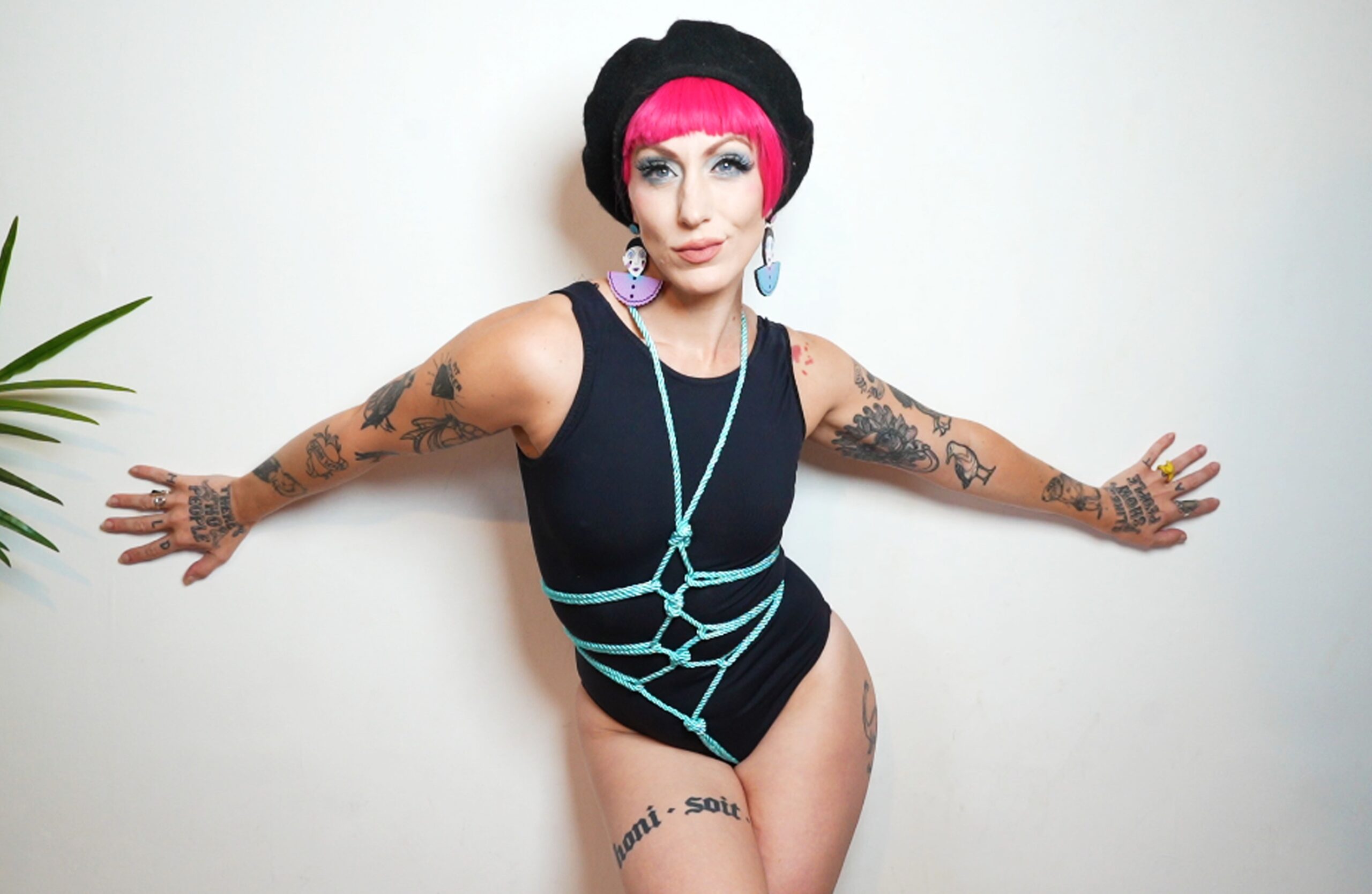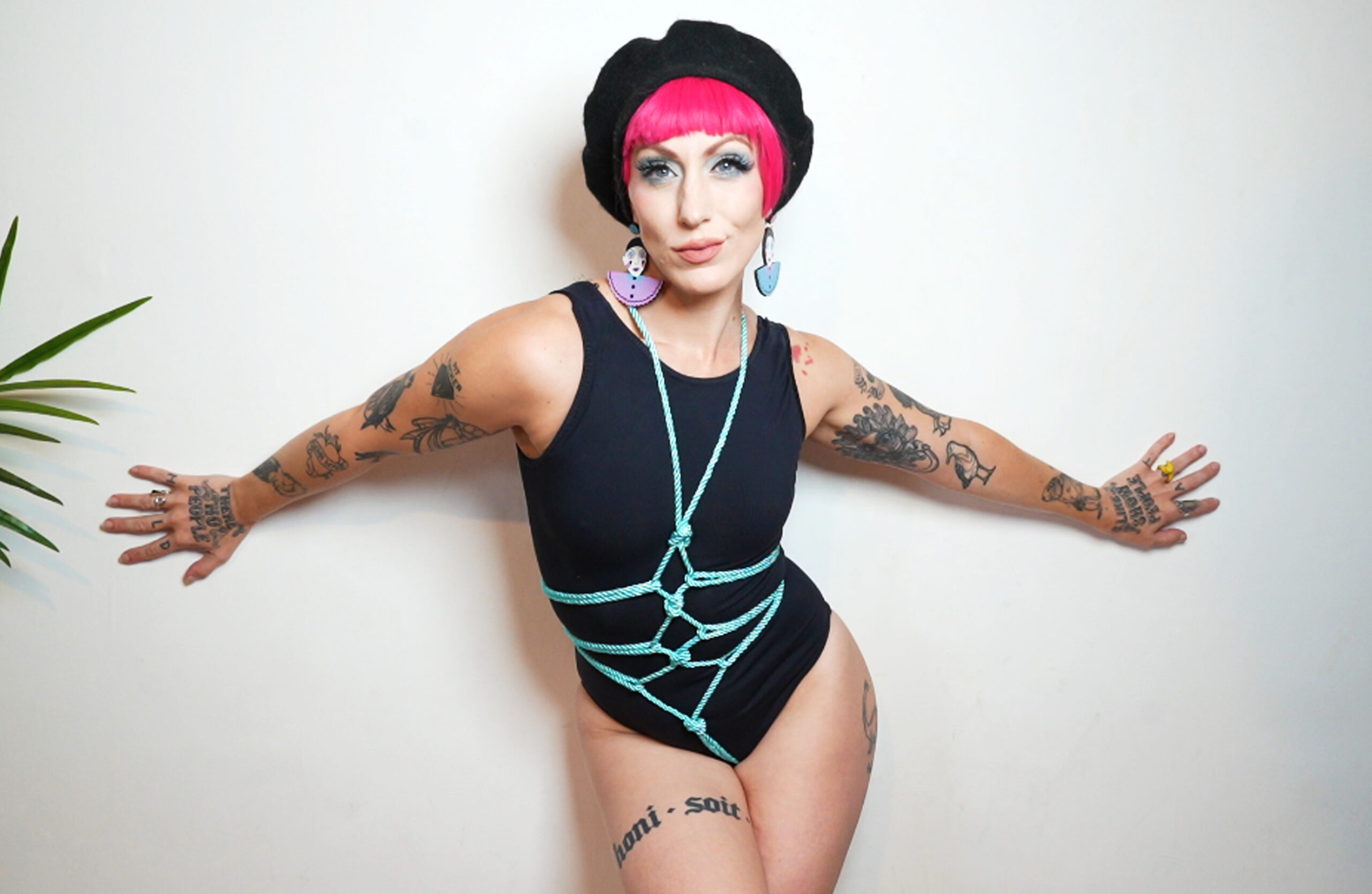Demigender Perspectives: How Society Can Better Support Nonbinary Identities

Understanding Demigender Identities
Understanding demigender identities is crucial for fostering inclusivity and creating a supportive environment for all individuals. Demigender identities encompass a range of experiences where individuals partially identify with one gender while also having a connection to another gender or no gender at all. This exploration delves into the multifaceted nature of demigender perspectives, examining the diverse ways in which individuals navigate their gender identities and offering insights into how society can better support nonbinary identities.
Defining Demigender
Demigender is an umbrella term that describes a range of gender identities where an individual partially identifies with one gender while also having a connection to another gender or no gender at all. Individuals who identify as demigender may feel like they are somewhere in between genders, or they may fluctuate between different gender identities over time.
It’s important to note that demigender is not a single, fixed identity; it encompasses a wide spectrum of experiences. Some common variations of demigender identities include: demiboy, meaning partial identification with the masculine gender; demigirl, meaning partial identification with the feminine gender; and agender demigirl or agender demiboy, meaning partial identification with one gender while primarily identifying as agender (having no gender).
Understanding and respecting demigender identities is crucial for creating an inclusive society where everyone feels seen and validated.
Variations within Demigender Identity
Demigender identities are diverse and can manifest in many ways. Some individuals might identify as demiboy, meaning they partially identify as male while also having a connection to other genders or no gender at all. Others may identify as demigirl, experiencing partial identification with the feminine gender. There are also agender demigirl and agender demiboy identities, where individuals partially identify with one gender while primarily identifying as agender.
It’s important to remember that these are just a few examples, and the spectrum of demigender experiences is vast. Some individuals may experience their gender identity as fluctuating or changing over time.
The key takeaway is that demigender identities are valid and deserve respect. Creating a supportive environment involves listening to individuals’ self-identified pronouns and respecting their chosen names. It also means educating ourselves about the nuances of gender identity and challenging societal norms that limit our understanding of what it means to be human.
Common Experiences of Demigender Individuals
Understanding demigender identities is crucial for fostering inclusivity and creating a supportive environment for all individuals. Demigender identities encompass a range of experiences where individuals partially identify with one gender while also having a connection to another gender or no gender at all. This exploration delves into the multifaceted nature of demigender perspectives, examining the diverse ways in which individuals navigate their gender identities and offering insights into how society can better support nonbinary identities.
Demigender is an umbrella term that describes a range of gender identities where an individual partially identifies with one gender while also having a connection to another gender or no gender at all. Individuals who identify as demigender may feel like they are somewhere in between genders, or they may fluctuate between different gender identities over time.
It’s important to note that demigender is not a single, fixed identity; it encompasses a wide spectrum of experiences. Some common variations of demigender identities include: demiboy, meaning partial identification with the masculine gender; demigirl, meaning partial identification with the feminine gender; and agender demigirl or agender demiboy, meaning partial identification with one gender while primarily identifying as agender (having no gender).
Demigender identities are diverse and can manifest in many ways. Some individuals might identify as demiboy, meaning they partially identify as male while also having a connection to other genders or no gender at all. Others may identify as demigirl, experiencing partial identification with the feminine gender. There are also agender demigirl and agender demiboy identities, where individuals partially identify with one gender while primarily identifying as agender.
The key takeaway is that demigender identities are valid and deserve respect. Creating a supportive environment involves listening to individuals’ self-identified pronouns and respecting their chosen names. It also means educating ourselves about the nuances of gender identity and challenging societal norms that limit our understanding of what it means to be human.
Societal Barriers Faced by Demigender People
Demigender individuals face numerous societal barriers due to a lack of understanding and acceptance of nonbinary identities. These barriers can manifest in various forms, including discrimination in employment, housing, healthcare, and social settings. The rigid binary gender system prevalent in many societies often fails to accommodate the complexities of demigender experiences, leading to feelings of isolation, invalidity, and marginalization.
Misgendering and Pronoun Issues
One significant barrier faced by demigender people is misgendering, which occurs when someone is referred to using pronouns or a name that does not align with their gender identity. This can be deeply upsetting and invalidating, causing emotional distress and reinforcing the feeling of being misunderstood.
Pronoun issues further complicate matters. Demigender individuals may use a variety of pronouns, including they/them, he/him, she/her, or a combination thereof. When people do not understand or respect these pronoun preferences, it can lead to further alienation and discomfort.
The widespread use of gendered language in everyday conversation and social structures also contributes to the challenges faced by demigender individuals. For example, forms that require individuals to select a gender category may force them into a binary choice that does not accurately reflect their identity.
Lack of Legal Recognition
Demigender individuals face numerous societal barriers due to a lack of understanding and acceptance of nonbinary identities. These barriers can manifest in various forms, including discrimination in employment, housing, healthcare, and social settings. The rigid binary gender system prevalent in many societies often fails to accommodate the complexities of demigender experiences, leading to feelings of isolation, invalidity, and marginalization.
One significant barrier faced by demigender people is misgendering, which occurs when someone is referred to using pronouns or a name that does not align with their gender identity. This can be deeply upsetting and invalidating, causing emotional distress and reinforcing the feeling of being misunderstood.
Pronoun issues further complicate matters. Demigender individuals may use a variety of pronouns, including they/them, he/him, she/her, or a combination thereof. When people do not understand or respect these pronoun preferences, it can lead to further alienation and discomfort.
The widespread use of gendered language in everyday conversation and social structures also contributes to the challenges faced by demigender individuals. For example, forms that require individuals to select a gender category may force them into a binary choice that does not accurately reflect their identity.
A lack of legal recognition for nonbinary identities exacerbates these barriers. Without official documentation or legal protections, demigender individuals may face difficulties accessing essential services, such as healthcare and social benefits, which often rely on gender-based categories.
Furthermore, the absence of legal recognition can contribute to a sense of invisibility and undermine the legitimacy of demigender identities. This lack of societal validation can have profound implications for individuals’ mental health, well-being, and overall life experiences.

Discrimination in Healthcare and Education
Demigender individuals face numerous societal barriers due to a lack of understanding and acceptance of nonbinary identities. These barriers can manifest in various forms, including discrimination in employment, housing, healthcare, and social settings. The rigid binary gender system prevalent in many societies often fails to accommodate the complexities of demigender experiences, leading to feelings of isolation, invalidity, and marginalization.
One significant barrier faced by demigender people is misgendering, which occurs when someone is referred to using pronouns or a name that does not align with their gender identity. This can be deeply upsetting and invalidating, causing emotional distress and reinforcing the feeling of being misunderstood.
Pronoun issues further complicate matters. Demigender individuals may use a variety of pronouns, including they/them, he/him, she/her, or a combination thereof. When people do not understand or respect these pronoun preferences, it can lead to further alienation and discomfort.
The widespread use of gendered language in everyday conversation and social structures also contributes to the challenges faced by demigender individuals. For example, forms that require individuals to select a gender category may force them into a binary choice that does not accurately reflect their identity.
Discrimination in healthcare can be particularly harmful for demigender people. They may encounter prejudice from medical professionals who are unfamiliar with nonbinary identities or fail to provide adequate care that respects their gender expression and needs. This can lead to delays in diagnosis and treatment, as well as feelings of discomfort and distrust towards the healthcare system.
Education settings also pose challenges for demigender individuals. They may face bullying, harassment, or exclusion from peers who do not understand their identities. School policies that lack inclusivity may further marginalize them by forcing them to conform to rigid gender norms.
Fostering Inclusivity for Demigender Individuals
Understanding demigender identities is crucial for fostering inclusivity and creating a supportive environment for all individuals. Demigender identities encompass a range of experiences where individuals partially identify with one gender while also having a connection to another gender or no gender at all. This exploration delves into the multifaceted nature of demigender perspectives, examining the diverse ways in which individuals navigate their gender identities and offering insights into how society can better support nonbinary identities.
Demigender is an umbrella term that describes a range of gender identities where an individual partially identifies with one gender while also having a connection to another gender or no gender at all. Individuals who identify as demigender may feel like they are somewhere in between genders, or they may fluctuate between different gender identities over time.
It’s important to note that demigender is not a single, fixed identity; it encompasses a wide spectrum of experiences. Some common variations of demigender identities include: demiboy, meaning partial identification with the masculine gender; demigirl, meaning partial identification with the feminine gender; and agender demigirl or agender demiboy, meaning partial identification with one gender while primarily identifying as agender (having no gender).

Understanding demigender identities is crucial for fostering inclusivity and creating a supportive environment for all individuals. Demigender identities encompass a range of experiences where individuals partially identify with one gender while also having a connection to another gender or no gender at all. This exploration delves into the multifaceted nature of demigender perspectives, examining the diverse ways in which individuals navigate their gender identities and offering insights into how society can better support nonbinary identities.
Demigender is an umbrella term that describes a range of gender identities where an individual partially identifies with one gender while also having a connection to another gender or no gender at all. Individuals who identify as demigender may feel like they are somewhere in between genders, or they may fluctuate between different gender identities over time.
It’s important to note that demigender is not a single, fixed identity; it encompasses a wide spectrum of experiences. Some common variations of demigender identities include: demiboy, meaning partial identification with the masculine gender; demigirl, meaning partial identification with the feminine gender; and agender demigirl or agender demiboy, meaning partial identification with one gender while primarily identifying as agender (having no gender).
Demigender individuals face numerous societal barriers due to a lack of understanding and acceptance of nonbinary identities. These barriers can manifest in various forms, including discrimination in employment, housing, healthcare, and social settings. The rigid binary gender system prevalent in many societies often fails to accommodate the complexities of demigender experiences, leading to feelings of isolation, invalidity, and marginalization.
One significant barrier faced by demigender people is misgendering, which occurs when someone is referred to using pronouns or a name that does not align with their gender identity. This can be deeply upsetting and invalidating, causing emotional distress and reinforcing the feeling of being misunderstood.
Pronoun issues further complicate matters. Demigender individuals may use a variety of pronouns, including they/them, he/him, she/her, or a combination thereof. When people do not understand or respect these pronoun preferences, it can lead to further alienation and discomfort.
The widespread use of gendered language in everyday conversation and social structures also contributes to the challenges faced by demigender individuals. For example, forms that require individuals to select a gender category may force them into a binary choice that does not accurately reflect their identity.
A lack of legal recognition for nonbinary identities exacerbates these barriers. Without official documentation or legal protections, demigender individuals may face difficulties accessing essential services, such as healthcare and social benefits, which often rely on gender-based categories.
Furthermore, the absence of legal recognition can contribute to a sense of invisibility and undermine the legitimacy of demigender identities. This lack of societal validation can have profound implications for individuals’ mental health, well-being, and overall life experiences.
Educating Yourself and Others
Demigender individuals face numerous societal barriers due to a lack of understanding and acceptance of nonbinary identities. These barriers can manifest in various forms, including discrimination in employment, housing, healthcare, and social settings. The rigid binary gender system prevalent in many societies often fails to accommodate the complexities of demigender experiences, leading to feelings of isolation, invalidity, and marginalization.
- Misgendering
- Pronoun Issues
- Gendered Language
- Lack of Legal Recognition
Understanding and respecting demigender identities is crucial for fostering inclusivity and creating a supportive environment. Here are some ways individuals can contribute to this effort:
- Educate Yourself: Take the time to learn about demigender identities, their diverse experiences, and the challenges they face.
- Use Inclusive Language: Be mindful of the language you use and avoid making assumptions about someone’s gender identity. When in doubt, ask for someone’s preferred pronouns.
- Listen and Validate: Create a space where demigender individuals feel safe to share their experiences without judgment. Listen attentively and validate their feelings.
- Challenge Gender Stereotypes: Question rigid gender norms and expectations that may marginalize demigender individuals. Promote acceptance and celebrate the diversity of human expression.
- Advocate for Inclusivity: Support policies and initiatives that promote gender equality and protect the rights of all individuals, including those who identify as demigender.
Using Inclusive Language

Understanding and respecting demigender identities is crucial for fostering inclusivity and creating a supportive environment. Here are some ways individuals can contribute to this effort:
- Educate Yourself: Take the time to learn about demigender identities, their diverse experiences, and the challenges they face.
- Use Inclusive Language: Be mindful of the language you use and avoid making assumptions about someone’s gender identity. When in doubt, ask for someone’s preferred pronouns.
- Listen and Validate: Create a space where demigender individuals feel safe to share their experiences without judgment. Listen attentively and validate their feelings.
- Challenge Gender Stereotypes: Question rigid gender norms and expectations that may marginalize demigender individuals. Promote acceptance and celebrate the diversity of human expression.
- Advocate for Inclusivity: Support policies and initiatives that promote gender equality and protect the rights of all individuals, including those who identify as demigender.
Creating Safe and Affirming Spaces
Demigender identities encompass a range of experiences where individuals partially identify with one gender while also having a connection to another gender or no gender at all. This exploration delves into the multifaceted nature of demigender perspectives, examining the diverse ways in which individuals navigate their gender identities and offering insights into how society can better support nonbinary identities.
Understanding demigender is crucial for fostering inclusivity. It’s important to note that demigender is not a single, fixed identity; it encompasses a wide spectrum of experiences. Some common variations include demiboy (partial identification with the masculine gender), demigirl (partial identification with the feminine gender), and agender demigirl or agender demiboy (partial identification with one gender while primarily identifying as agender).
Demigender individuals face numerous societal barriers due to a lack of understanding and acceptance of nonbinary identities. These barriers can manifest in various forms, including discrimination in employment, housing, healthcare, and social settings. The rigid binary gender system prevalent in many societies often fails to accommodate the complexities of demigender experiences, leading to feelings of isolation, invalidity, and marginalization.
One significant barrier faced by demigender people is misgendering, which occurs when someone is referred to using pronouns or a name that does not align with their gender identity. This can be deeply upsetting and invalidating, causing emotional distress and reinforcing the feeling of being misunderstood. Pronoun issues further complicate matters as demigender individuals may use a variety of pronouns (they/them, he/him, she/her, or a combination thereof). When people do not understand or respect these pronoun preferences, it can lead to further alienation and discomfort.
The widespread use of gendered language in everyday conversation and social structures also contributes to the challenges faced by demigender individuals. For example, forms that require individuals to select a gender category may force them into a binary choice that does not accurately reflect their identity. A lack of legal recognition for nonbinary identities exacerbates these barriers. Without official documentation or legal protections, demigender individuals may face difficulties accessing essential services.
To foster inclusivity and create a supportive environment, it’s crucial to:
* **Educate Yourself:** Take the time to learn about demigender identities, their diverse experiences, and the challenges they face.
* **Use Inclusive Language:** Be mindful of the language you use and avoid making assumptions about someone’s gender identity. When in doubt, ask for someone’s preferred pronouns.
* **Listen and Validate:** Create a space where demigender individuals feel safe to share their experiences without judgment. Listen attentively and validate their feelings.
* **Challenge Gender Stereotypes:** Question rigid gender norms and expectations that may marginalize demigender individuals. Promote acceptance and celebrate the diversity of human expression.
* **Advocate for Inclusivity:** Support policies and initiatives that promote gender equality and protect the rights of all individuals, including those who identify as demigender.
Creating a society where everyone feels seen, heard, and respected, regardless of their gender identity, is an ongoing process that requires continuous effort, education, and empathy.
Resources and Support for Demigender People
Understanding demigender identities is crucial for fostering inclusivity and creating a supportive environment for all individuals. Demigender identities encompass a range of experiences where individuals partially identify with one gender while also having a connection to another gender or no gender at all. This exploration delves into the multifaceted nature of demigender perspectives, examining the diverse ways in which individuals navigate their gender identities and offering insights into how society can better support nonbinary identities.
Organizations Providing Support
Understanding demigender identities is crucial for fostering inclusivity and creating a supportive environment for all individuals. Demigender identities encompass a range of experiences where individuals partially identify with one gender while also having a connection to another gender or no gender at all. This exploration delves into the multifaceted nature of demigender perspectives, examining the diverse ways in which individuals navigate their gender identities and offering insights into how society can better support nonbinary identities.
Demigender is an umbrella term that describes a range of gender identities where an individual partially identifies with one gender while also having a connection to another gender or no gender at all. Individuals who identify as demigender may feel like they are somewhere in between genders, or they may fluctuate between different gender identities over time.
It’s important to note that demigender is not a single, fixed identity; it encompasses a wide spectrum of experiences. Some common variations of demigender identities include: demiboy, meaning partial identification with the masculine gender; demigirl, meaning partial identification with the feminine gender; and agender demigirl or agender demiboy, meaning partial identification with one gender while primarily identifying as agender (having no gender).
- Organizations Providing Support
- Resources for Demigender Individuals
- The Trevor Project: A crisis intervention and suicide prevention organization for LGBTQ+ youth, offering support through phone, online chat, and text. They provide a safe space for demigender individuals to connect with others who understand their experiences.
- GLAAD:** A media advocacy organization working to promote LGBTQ+ acceptance through the portrayal of diverse stories in entertainment and news. Their resources and campaigns can help create a more inclusive society for demigender people.
- Human Rights Campaign (HRC): An advocacy group fighting for LGBTQ+ equality, including the legal recognition of nonbinary identities. They work to advance policies that protect the rights of all individuals, regardless of their gender identity.
- Gender Spectrum:** A national organization dedicated to supporting gender-expansive children and youth, providing resources and training to families, schools, and communities.
Online Communities and Forums
Here are some online communities and forums where demigender individuals can connect with others who understand their experiences:
* **r/Demigender:** A subreddit dedicated to discussions about demigender identities, experiences, and support.
* **Tumblr:** Search for hashtags like #demigirl, #demiboy, and #agenderdemigender to find communities and blogs dedicated to these identities.
* **Reddit’s r/GenderIdentity:** While not exclusively for demigender individuals, this subreddit provides a space for discussion about various gender identities, including demigender experiences.
* **Discord Servers:** Many LGBTQ+ and nonbinary-specific Discord servers exist. Look for servers that explicitly mention support for demigender people or have a channel dedicated to it.
Remember: Finding online communities where you feel safe and accepted is important. It’s okay to explore different platforms and groups until you find ones that resonate with you.
Mental Health Resources
Understanding and respecting demigender identities is crucial for fostering inclusivity and creating a supportive environment. Demigender identities encompass a range of experiences where individuals partially identify with one gender while also having a connection to another gender or no gender at all. This exploration delves into the multifaceted nature of demigender perspectives, examining the diverse ways in which individuals navigate their gender identities and offering insights into how society can better support nonbinary identities.
Demigender is an umbrella term that describes a range of gender identities where an individual partially identifies with one gender while also having a connection to another gender or no gender at all. Individuals who identify as demigender may feel like they are somewhere in between genders, or they may fluctuate between different gender identities over time.
It’s important to note that demigender is not a single, fixed identity; it encompasses a wide spectrum of experiences. Some common variations of demigender identities include: demiboy, meaning partial identification with the masculine gender; demigirl, meaning partial identification with the feminine gender; and agender demigirl or agender demiboy, meaning partial identification with one gender while primarily identifying as agender (having no gender).
- The Trevor Project: A crisis intervention and suicide prevention organization for LGBTQ+ youth, offering support through phone, online chat, and text. They provide a safe space for demigender individuals to connect with others who understand their experiences.
- GLAAD:** A media advocacy organization working to promote LGBTQ+ acceptance through the portrayal of diverse stories in entertainment and news. Their resources and campaigns can help create a more inclusive society for demigender people.
- Human Rights Campaign (HRC): An advocacy group fighting for LGBTQ+ equality, including the legal recognition of nonbinary identities. They work to advance policies that protect the rights of all individuals, regardless of their gender identity.
- Gender Spectrum:** A national organization dedicated to supporting gender-expansive children and youth, providing resources and training to families, schools, and communities.
- **PFLAG:** (Parents, Families, and Friends of Lesbians and Gays) PFLAG offers support to LGBTQ+ individuals and their families. Their website has resources specifically for demigender individuals and allies.
Here are some online communities and forums where demigender individuals can connect with others who understand their experiences:
* **r/Demigender:** A subreddit dedicated to discussions about demigender identities, experiences, and support.
* **Tumblr:** Search for hashtags like #demigirl, #demiboy, and #agenderdemigender to find communities and blogs dedicated to these identities.
* **Reddit’s r/GenderIdentity:** While not exclusively for demigender individuals, this subreddit provides a space for discussion about various gender identities, including demigender experiences.
* **Discord Servers:** Many LGBTQ+ and nonbinary-specific Discord servers exist. Look for servers that explicitly mention support for demigender people or have a channel dedicated to it.
Remember: Finding online communities where you feel safe and accepted is important. It’s okay to explore different platforms and groups until you find ones that resonate with you.
The Future of Demigender Visibility and Advocacy
The future of demigender visibility and advocacy looks promising, driven by increasing awareness, acceptance, and activism within society.
Several factors contribute to this positive outlook:
* **Growing Awareness:** Demigender identities are gradually becoming more recognized and understood in mainstream media, education, and social discourse. This increased visibility helps to normalize these experiences and reduce stigma.
* **Activism and Advocacy:** Organizations like the Human Rights Campaign and GLAAD actively advocate for legal protections and social recognition of nonbinary identities, including demigender people. Their efforts are crucial for advancing equality and ensuring that demigender individuals have the same rights and opportunities as others.
* **Online Communities:** The internet provides a valuable platform for demigender individuals to connect with each other, share their experiences, find support, and build community. Online spaces allow for self-expression and validation, which is crucial for fostering a sense of belonging.
* **Shifting Societal Norms:** There’s a growing trend towards greater gender fluidity and acceptance of diverse gender identities. This shift in societal norms creates a more inclusive environment where individuals feel comfortable expressing themselves authentically.
Despite these advancements, challenges remain:
* **Legal Recognition:** Many jurisdictions still lack legal recognition of nonbinary genders, leaving demigender people vulnerable to discrimination in areas like healthcare, housing, and employment.
* **Misgendering and Discrimination:** Demigender individuals continue to face misgendering and discrimination in various settings, leading to emotional distress and feelings of isolation.
To further advance the cause of demigender visibility and advocacy:
* **Educate Yourself:** Learn about demigender identities, their complexities, and the challenges they face. Challenge your own biases and assumptions about gender.
* **Use Inclusive Language:** Use gender-neutral language whenever possible and always ask for someone’s preferred pronouns. Respect their choices and avoid making assumptions.
* **Support Organizations:** Donate to or volunteer with organizations that advocate for LGBTQ+ rights, including those specifically focused on nonbinary identities.
* **Speak Out Against Discrimination:** Challenge instances of misgendering and discrimination when you witness them. Be an ally and create a more inclusive environment for demigender individuals.
By working together, we can create a society where demigender people are seen, heard, and respected for who they truly are.
sleigh nightwear Buy Luxury Rechargeable Vibrators Now
Discover Realistic Vibrators for Couples and Solo Play
Get Vibrators in Non-Traditional Styles Today
Buy Compact Bullet Vibrators for Maximum Portability
Buy Wireless Vibrators with Remote Control Options
Purchase Premium Luxury Vibrators for Solo or Partner Use
Order Hands-Free Wireless Vibrators Today
Shop the Best Waterproof Vibrators with Great Reviews
Democracy Defense Coalition
Fearfully Fashioned




























